Kettle’s Yard: A Tour Through Cambridge’s Modern Art Gallery
Kettle’s Yard, a somewhat modest home in the middle of Cambridge, UK, harbors an impressive art collection of predominantly modern and abstract...
Ruxi Rusu 24 June 2024
Movies on thefts and art heists are making huge box office hits for their great action and wit. However, even if real art heists have been sometimes as spectacular as those on the big screen, the repercussions for the art world and history are tragic. The stolen works of art are often renowned pieces by great masters. That makes them very difficult to be placed after the theft since everybody would recognize them. Not even the once potent black market is now interested. Sometimes the paintings are used for ransom, but this is rarely successful. This leads to the loss of masterpieces of great financial value, but even greater loss for the art world.
Real Polish pirates stole the Last Judgement triptych by Hans Memling, envisioning the second coming of Christ, in 1473. Angelo Tani, head of the Bruges branch of Medici’s bank, commissioned the painting in 1465 for a church in Florence. When pirates attacked, the painting was on a ship heading to the Italian city. Polish buccaneers attacked the ship transporting it, stole the three panels, and brought them to a cathedral in Gdańsk. The triptych is still in Poland, in the National Museum in Gdańsk.

Jan van Eyck’s Ghent Altarpiece is considered among the 10 most important paintings ever made. Maybe this is why it is the most frequently stolen artwork in history, having been burgled, all or in part, on six occasions and the object of 13 crimes over its almost 600 years of existence.
As soon as it was unveiled to the public, on May 6th, 1432, it became a site of pilgrimage for artists and travelers who voyaged to the Cathedral of Saint Bavo in the city of Ghent.
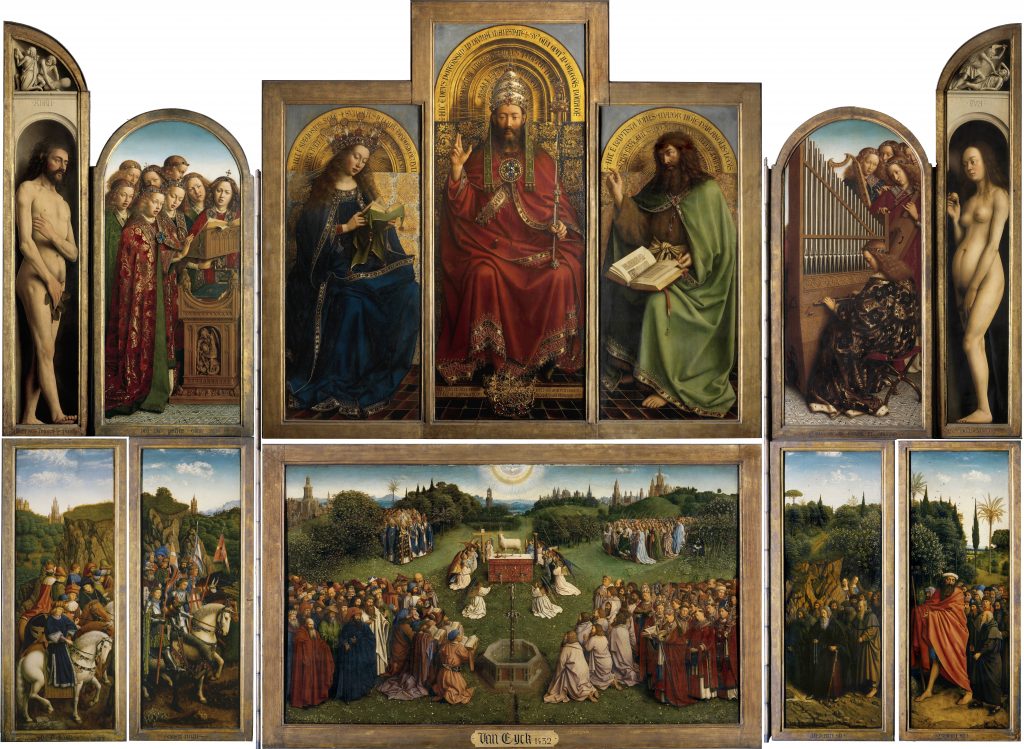


The Calvinist reform enforced the removal of religious images by invoking the Decalogue’s prohibition of idolatry and prohibited the manufacturing of images of God. In an episode known as the Great Iconoclasm, bands of Calvinists entered the Catholic churches of the Netherlands in 1566, shattered stained-glass windows, smashed statues, and destroyed paintings. During these events, a group of knights had the foresight to pull apart the Ghent altarpiece into its 12 component panels and hide them safely in the bell tower. The original framework, which was likely sculpted and highly ornate, has been lost since the Calvinist riots.
Its tumultuous history continued in 1794, when French Republican troops captured Ghent, removed the four central panels, and shipped them to the Louvre in Paris: Napoleon’s new museum of art. After his defeat at Waterloo in 1815, Louis XVIII was restored to the throne. As a thank you to Ghent, which had earlier sheltered him, he returned the stolen pieces.
In 1816 a rebel vicar sold the wing panels of the altarpiece to an art dealer. What happened next is not clear, but they eventually ended up at a museum in Berlin. Nevertheless, all the panels were returned to Ghent, as a condition of the Treaty of Versailles in 1919.
Hitler was absolutely convinced that the occult and the supernatural were real. He considered the Ghent altarpiece to be a coded map of lost Christian relics that would provide supernatural powers to those who possessed them. He arranged for his troops to locate the altarpiece. Some sources state the tryptic was on the route to the Vatican, others to Chateau de Pau in the French Pyrenees for safe-keeping, when it was pilfered. The Nazis hid the Ghent Altarpiece in a salt mine in Altaussee, Austria. It was saved from destruction by the Monuments Men. This was an organization established in 1943 to help protect cultural property in war areas during and after World War II.
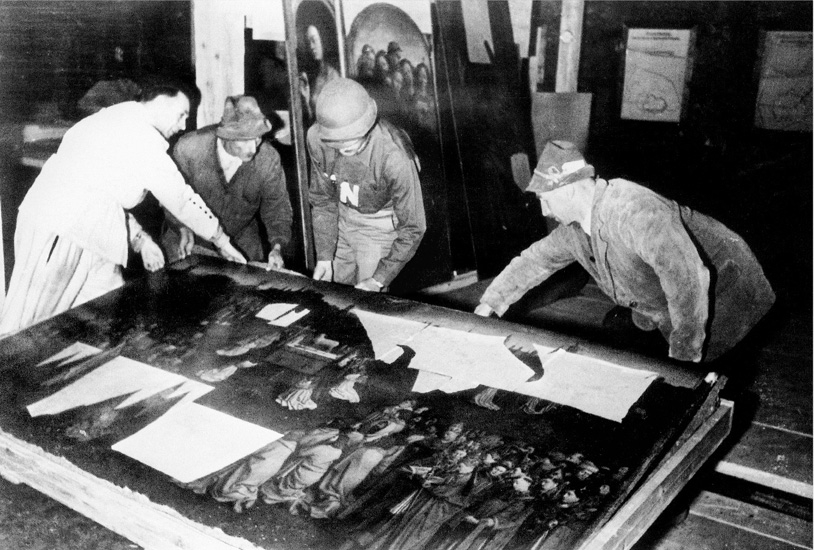


Right when the COVID-19 pandemic started to spread through Europe, in February 2020 Van Eyck. An Optical Revolution was taking place in MSK, in Ghent, Belgium. It was the largest Jan van Eyck exhibition ever. Central to the exhibition were the eight freshly restored exterior panels of The Adoration of the Mystic Lamb, plus the interior panels with Adam and Eve.
After so many adventures, the Ghent Altarpiece is now safe in a glass case, back in St. Bavo’s Cathedral. Moreover, it will never ever leave the cathedral again.
Maybe you are wondering who the most stolen artist is? Pablo Picasso leads the top of most-stolen artists, followed by Nick Lawrence and Marc Chagall in third place. The latest data retrieved dates back to 2012 when Picasso was leading with 1147 stolen works in art heists.



Some have been recovered, some have not, some have been destroyed, but a huge majority are likely still out there, hidden away.
The most expensive of all the 1147 stolen Picassos is Le pigeon aux petits pois (Pigeon with peas), painted in 1911, stolen from the Musée d’Art Moderne de la Ville de Paris in May 2010, estimated at €23 million.
The Nazi looting of 650,000 art objects from Europe is known as the greatest displacement of art in history. Many works were never recovered. The art heist and theft of other items which occurred as a result of the organized looting of European countries during the time of the Third Reich is called Nazi plunder (Raubkunst). This operation was carried out from when Adolf Hitler became Chancellor of Germany in 1933, until the end of World War II in 1945.



In his youth, Adolf Hitler wanted to become a professional artist, but his dreams were ruined after he twice failed the entrance exam for the Academy of Fine Arts in Vienna. He favored classical portraits and landscapes, especially of Germanic origin. It is therefore comprehensible why he ferociously attacked modern art as degenerate, including Cubism, Futurism, and Dadaism.



In Hitler’s own words, degenerate art is the art that insults German feeling, destroys or confuses natural form, or simply reveals an absence of adequate manual and artistic skill. On July 19th, 1937 an exhibition was mounted in Munich, so people could see and understand the world of decay.
The Degenerate Art Exhibition (Die Ausstellung Entartete Kunst) included 650 confiscated paintings, sculptures, and prints by 112 artists, primarily German: Georg Grosz, Ernst Ludwig Kirchner, Paul Klee, Wilhelm Lehmbruck, Franz Marc, Emil Nolde, Otto Dix, and others. 1,000,000 people attended the exhibition in its first six weeks. The exhibition lasted until November 30th, 1937 and in the end 2,009,899 visitors attended it, with an average of 20,000 people per day.



On March 20th, 1939, the Nazis set fire to 1,004 paintings and sculptures, and 3,825 watercolors, drawings, and prints in the courtyard of the Berlin Fire Department.
Approximately 20% of the art in Europe was looted by the Nazis, and there are over 100,000 items that still have not been returned to their rightful owners.
The Allies created special organizations, such as the Monuments Men, Fine Arts and Archives (MFAA) to help protect famous European monuments from destruction, and after the war, to travel to formerly Nazi-occupied territories to find Nazi art repositories. In 1944 and 1945 the Monuments Men found artworks in over 1,050 repositories in Germany and Austria at the end of World War II.
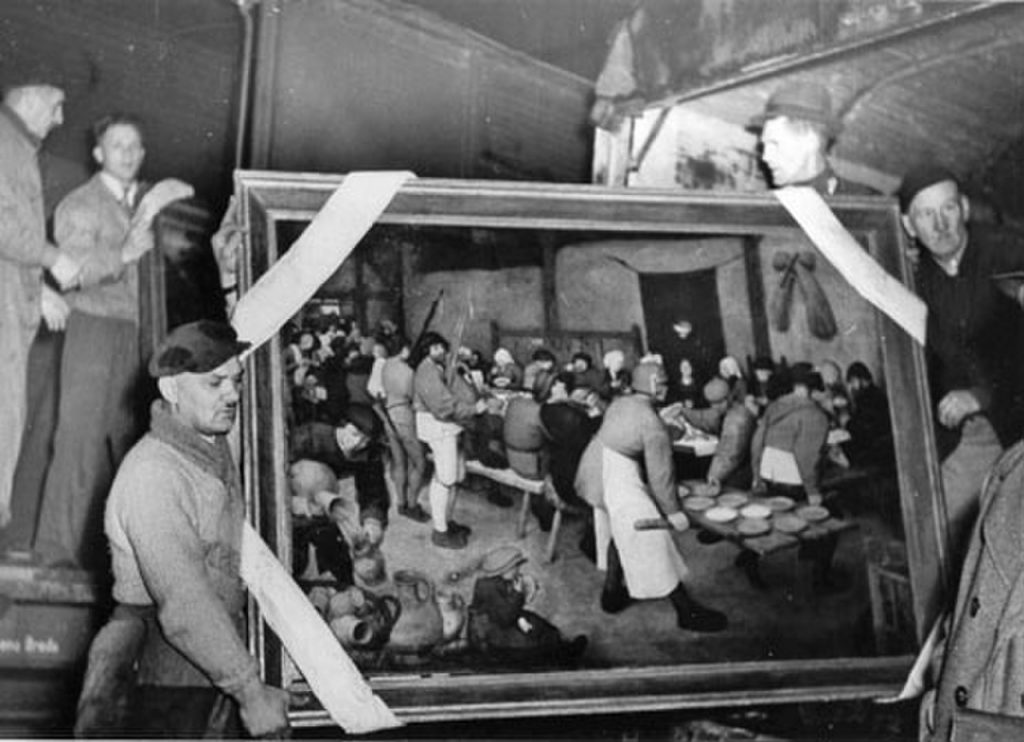


Nowadays there are laws regulating the restitution of any Nazi-looted artwork back to their original owner, most of them Jews. The notoriety of being a Nazi-looted work of art can add value to a picture. Sotheby’s alone has sold over $800 million of the once looted art.
In 81 minutes, 13 masterpieces were stolen in 1990 from the Isabella Stewart Gardner Museum in Boston. The Federal Bureau of Investigation (FBI) has valued the haul at $500 million. The museum is offering a $10 million reward for information leading to the art’s recovery, the largest bounty ever offered by a private institution.
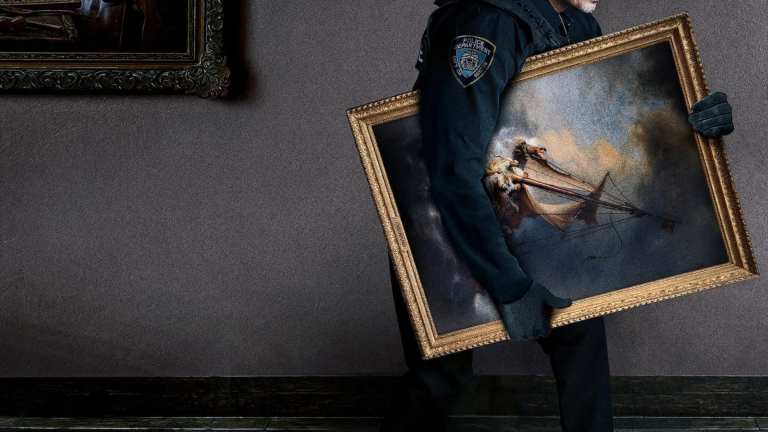


The documentary This Is a Robbery: The World’s Biggest Art Heist on Netflix provides thorough details on the investigation. In short, two men in police uniforms pushed the museum buzzer, stated they were responding to a disturbance, and requested to be let in. The guard on duty broke protocol and allowed them through the employee entrance. At the fake officers’ request, he stepped away from the watch desk. He and a second security guard were then handcuffed and tied up in the basement of the museum.
Rembrandt’s Christ in the Storm on the Sea of Galilee and A Lady and Gentleman in Black were cut from their frames. Vermeer’s The Concert and Govert Flinck’s Landscape with an Obelisk were removed from their frames. A small self-portrait etching by Rembrandt was taken from the side of a chest. From another gallery on the same floor, five Degas drawings and Manet’s Chez Tortoni were taken.
The most famous of them all, Christ in the Storm on the Sea of Galilee was Rembrandt’s only painted seascape. It has an estimated value of around $100 million. Calming the storm is one of the miracles of Jesus in the Gospels, reported in Matthew 8:23–27, Mark 4:35–41, and Luke 8:22–25 (the Synoptic Gospels).
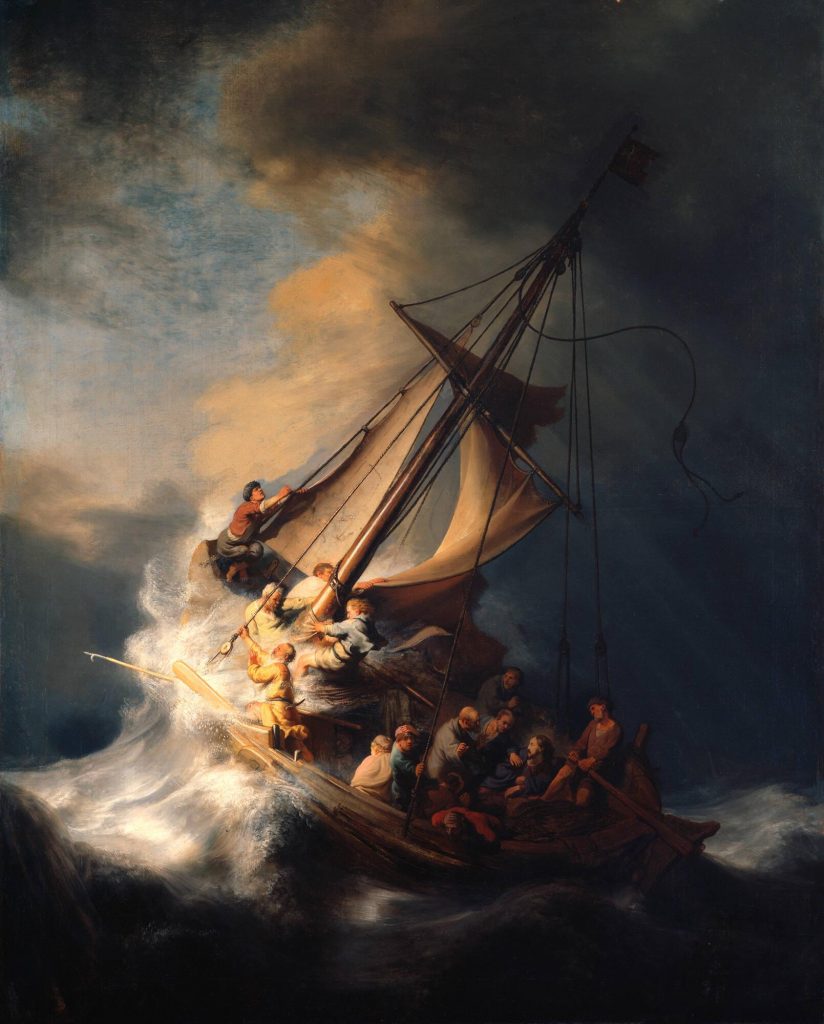


“That day when evening came, he said to his disciples, “Let us go over to the other side.” Leaving the crowd behind, they took him along, just as he was, in the boat. There were also other boats with him. A furious squall came up, and the waves broke over the boat, so that it was nearly wamped. Jesus was in the stern, sleeping on a cushion. The disciples woke him and said to him, “Teacher, don’t you care if we drown?” He got up, rebuked the wind and said to the waves, “Quiet! Be still!” Then the wind died down and it was completely calm. He said to his disciples, “Why are you so afraid? Do you still have no faith?” They were terrified and asked each other, “Who is this? Even the wind and the waves obey him!”
Mark 4:35–41, The Bible.
The Concert by Johannes Vermeer is another masterpiece taken during the Isabella Stewart Gardner Museum heist. It is currently the most valuable missing artwork in the world, with an estimated worth of $250 million at the last evaluation in 2015.
Isabella Stewart Gardner herself was extremely fond of this particular painting for its elegant depiction of domestic music-making, but also because it was her first major acquisition that she bought without the help of experts.
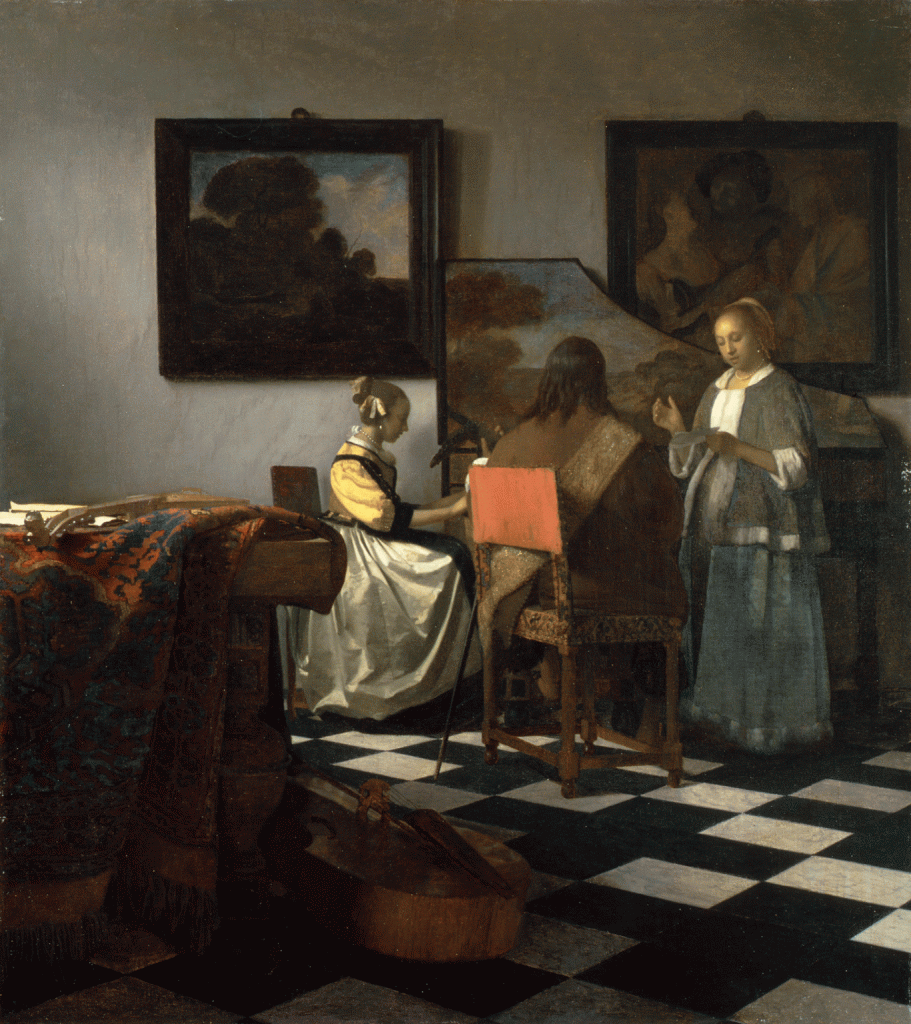


The work shows three musicians: a young woman sitting at a harpsichord, a man playing the lute, and a woman who is singing. A viola da gamba can be seen lying on the floor. Will a fourth character join them? The musicians’ clothing and surroundings identify them as members of the upper bourgeoisie. Vermeer rather deliberately crafts a sense of mystery: this study in social interaction is a comedy of manners open to our interpretation.
In 2000 armed thieves orchestrated a complex art heist operation at the Nationalmuseum in Stockholm, Sweden. First, they set off bombs in two cars at nearby hotels, as a distraction for the police. The men armed with submachine guns and handguns threatened the guards and ran off with three works by Rembrandt and Pierre-Auguste Renoir. The robbers escaped by throwing nails on the road to obstruct the police cars and fled in a motorboat they had docked in the water canal in front of the museum.
Police stated that the artworks were valued in 2000 at $30 million.



In January 2001, the police received a ransom demand for several million Swedish krona, but they refused to pay. The same month police arrested the mastermind of the operation, together with several accomplices. A few others were arrested in 2002, but unfortunately, at that time the paintings were not yet located. A few months later, in a completely unrelated drug raid, they recovered Renoir’s Conversation.
In 2005 the FBI was investigating a Bulgarian drug trafficking syndicate. One of the interrogated men gave them the Young Parisian and told them that the Rembrandt was in Denmark. Later that month, authorities in Copenhagen set up a sting operation pretending to be a buyer of the Rembrandt to catch the sellers in the act. The sellers were trying to trade the $42 million painting for only $100,000! All the criminals involved have been arrested and all the paintings recovered.
In 2003, thieves broke into the Whitworth Art Gallery in Manchester, UK, and stole relatively minor paintings by Paul Gauguin, Pablo Picasso, and Vincent van Gogh, worth a collected £4 million.
On one of the wettest nights Manchester has known for months, the smugglers placed the canvases in a card tube, and hid them 200 meters across the museum’s park, in a toilet block. The tube was soaked but the paintings were only slightly damaged – the Van Gogh was torn in one corner but could be repaired; the other two pictures had small marks caused by exposure to the weather.
The damp card tube had the following note on it:
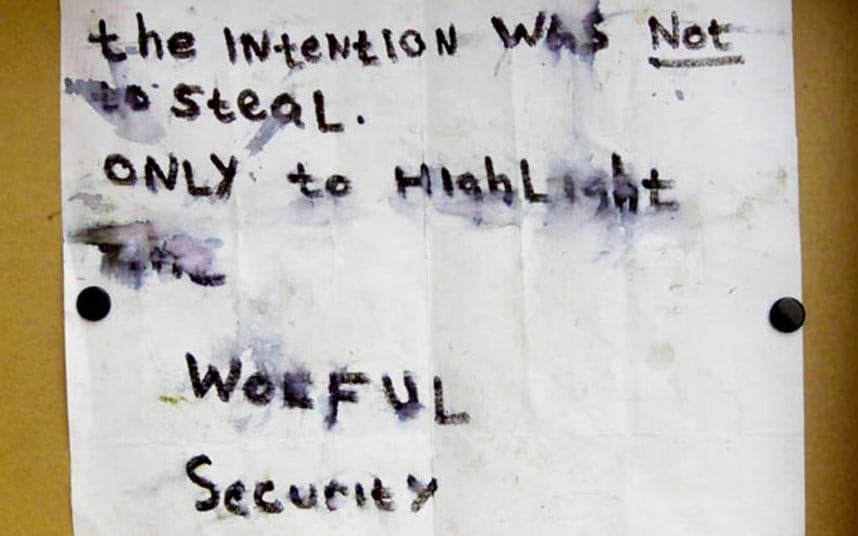


Apparently, the thieves only wanted to draw attention to the poor security of the museums. The people who executed the theft have still not been identified.
The Two Laughing Boys with a Mug of Beer, which was made in 1626 by Frans Hals, has since been stolen a total of three times: once in 1988, once in 2011, and the last time in August of 2020. Last year, the canvas was stolen from the Museum Hofje van Mevrouw van Aerden in Leerdam, Netherlands, during the morning hours. BBC News stated the value of the Frans Halls painting at around €15 million.



Just a few months before, The Parsonage Garden at Nuenen (Spring Garden) by Vincent van Gogh was stolen from the Singer Laren museum in North Holland on March 30th, 2020, Van Gogh’s birthday. At the time of the theft, the museum was closed to the public due to the COVID-19 pandemic. Police said the thieves broke through the glass doors and left before law enforcement responded to the alarm.
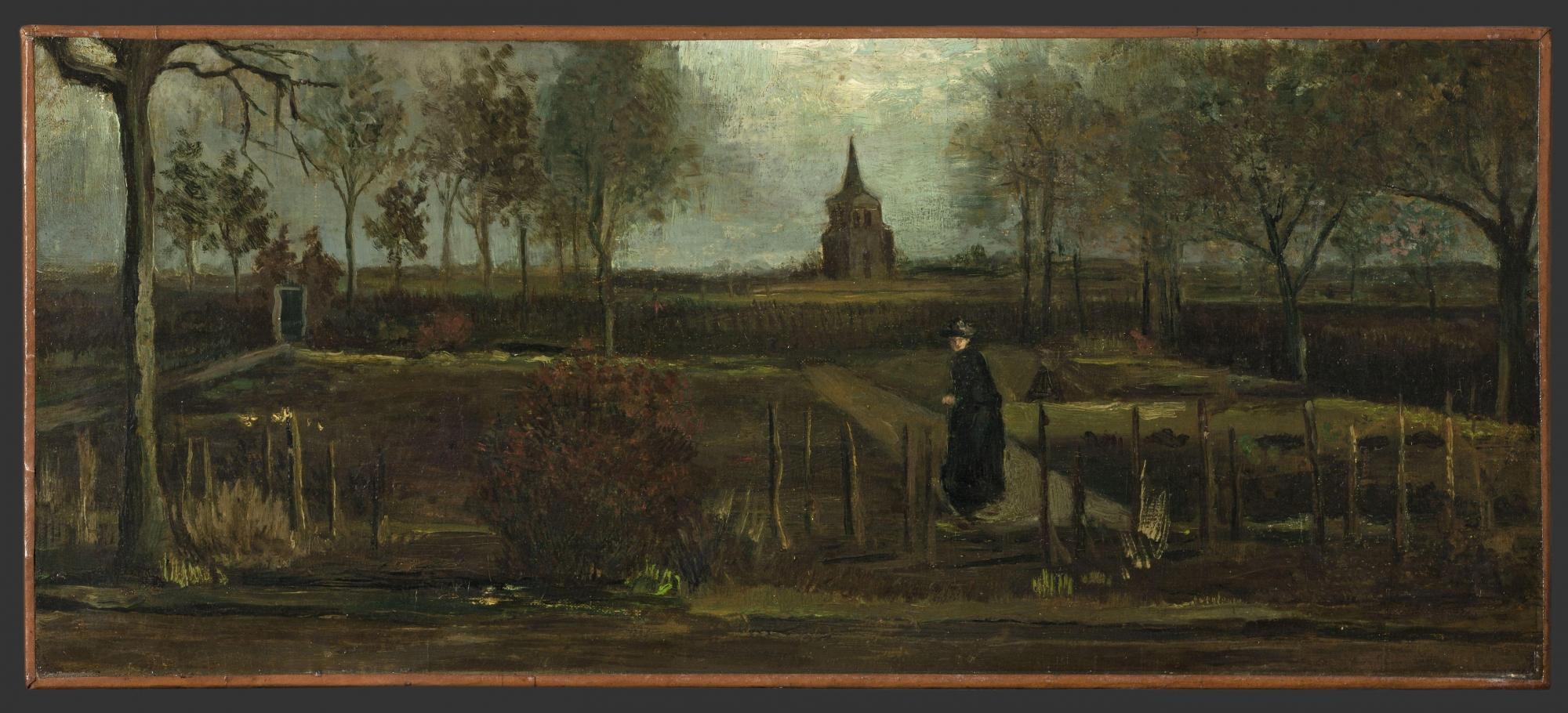


In early April 2021, a person was arrested in the town of Baarn, as a suspect in the theft of Two Laughing Boys with a Mug of Beer by Frans Hals and also of the theft of The Parsonage Garden at Nuenen by Vincent van Gogh. Even though he was eventually sentenced to eight years imprisonment and other people involved in the heist were also caught by the police, the paintings were not recovered until 2023. In September 2023, after a long police investigation, Van Gogh’s painting was handed over to the police by a man who had nothing to do with a theft and returned to the Groninger Museum.
The search for other stolen artworks continues. Also, all the museums in the world are taking enhanced security measures to protect their permanent collections from art heists. Even greater precaution is taken for the transport of the masterpieces when they travel to temporary exhibitions around the world. Hopefully, this will discourage thieves and allow us to enjoy the marvelous world of art.
DailyArt Magazine needs your support. Every contribution, however big or small, is very valuable for our future. Thanks to it, we will be able to sustain and grow the Magazine. Thank you for your help!